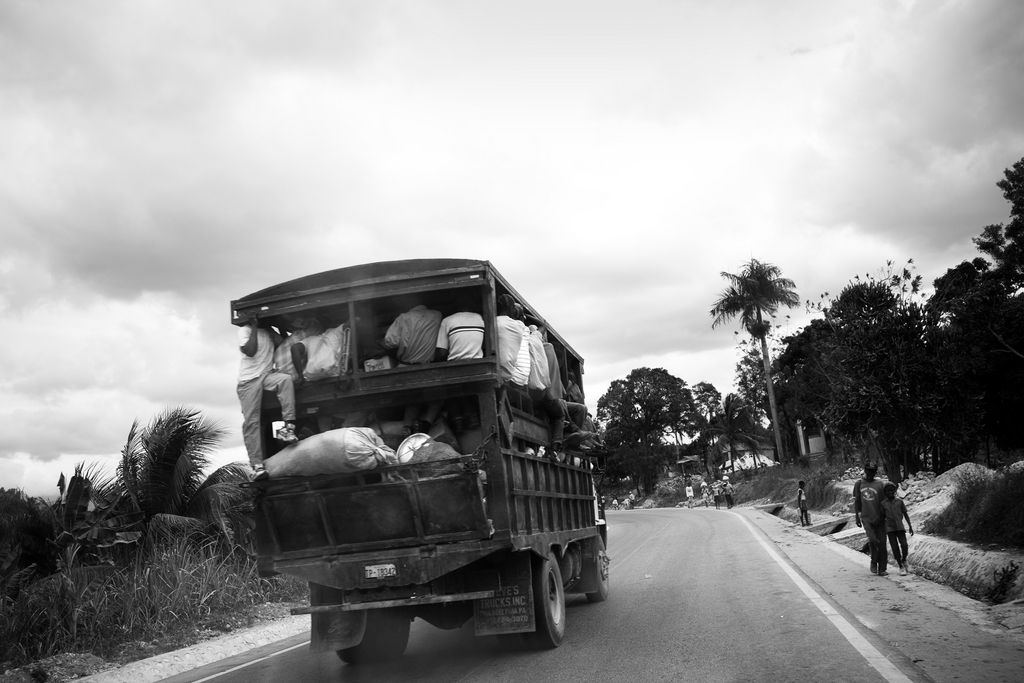By Sarah Leavitt | Digital Outreach Manager
Thanks to your generous support rural families in Haiti are beginning to recover since January's earthquake. The use of oxen are proving invaluable as farmers have begun planting for the season. As oxen cultivate the land much quicker than the use of a hand-plow ever could, 100's of farmers are planting more and expanding their crops for the future. This is hope that Haiti can really hold on to.
Please read the Lambi Fund of Haiti's Spring 2010 newsletter for the most recent updates from earthquake relief and recovery in the field. You will learn about Lambi Fund's work to date and our plans for the future:
PROGRESS AMID THE CHAOS:Lambi Fund Responds to the Earthquake Disaster in Haiti
On January 12 the ground shook. It trembled like never before. In just a few horrifying moments, a massive earthquake destroyed Port-au-Prince, Haiti’s capital, and major provincial cities like Jacmel, Léogâne, and Petit-Goâve.
The world watched in horror as the toll on human life unfolded. Never before, declared UN Secretary-General Ban Ki-Moon, has a natural disaster been so devastating.
The Presidential Palace crumbled, UN headquarters were destroyed, building after building collapsed like pancakes.
Unbelievably, 250,000 residences were destroyed or rendered uninhabitable.
The horrible stench of death lurked in the city for weeks afterwards. Over 200,000 people were killed. More than 150,000 individuals injured and left to live life as amputees. In the blink of an eye, nearly 2 million Haitians were rendered homeless.
Photo: Roberto (Bear) Guerra Responding to such a catastrophe has not been easy. Through the rubble, roads were impossible to navigate and trying to coordinate the influx of international donor agencies was declared a logistical nightmare.
Earthquake survivors left with no homes, no food, and no jobs quickly realized that aid distribution would be slow and unreliable.
Thus over 500,000 affected residents caught the first bus they could find to live with family members and friends in the rural provinces of Haiti.
This massive migration of internally displaced persons has wreaked havoc on already impoverished rural communities, where the average person still survives on less than $2 a day. Some rural populations (so much as) doubled overnight.
Keeping with the Haitian tradition of peasant solidarity, rural communities have been quick to take in quake survivors and have shared with them everything they have. The 80-year-old mother of the field monitor for Fon Lanbi Pou Ayiti has taken in 39 people in her small house.
Christianne Adrien, a street vendor, and her husband Ilson, a farmer, took in 18 members of her extended family. "If it were for the money, we would never have done it."
After the earthquake, more than a half million people fled Port au Prince and relocated to rural areas. They, along with thousands of peasants throughout Haiti have spent what little they have on clean water, medical supplies, clothing, bags of rice, and cans of beans for their new neighbors. Peasants have slaughtered precious cows to bring meat to patients at local hospitals.
Christianne continues, "We did this because we wanted them to have a life. If God saved the life of some people from a catastrophe of that size, it's so that we can protect the life of others. People have to live; you have to receive them."
It is here, through fellow Haitians and local grassroots networks that earthquake survivors are receiving the aid that they so desperately need. Resources are tight, but the spirit of sharing stays strong.
Links:
Project reports on GlobalGiving are posted directly to globalgiving.org by Project Leaders as they are completed, generally every 3-4 months. To protect the integrity of these documents, GlobalGiving does not alter them; therefore you may find some language or formatting issues.
If you donate to this project or have donated to this project, you can receive an email when this project posts a report. You can also subscribe for reports without donating.
